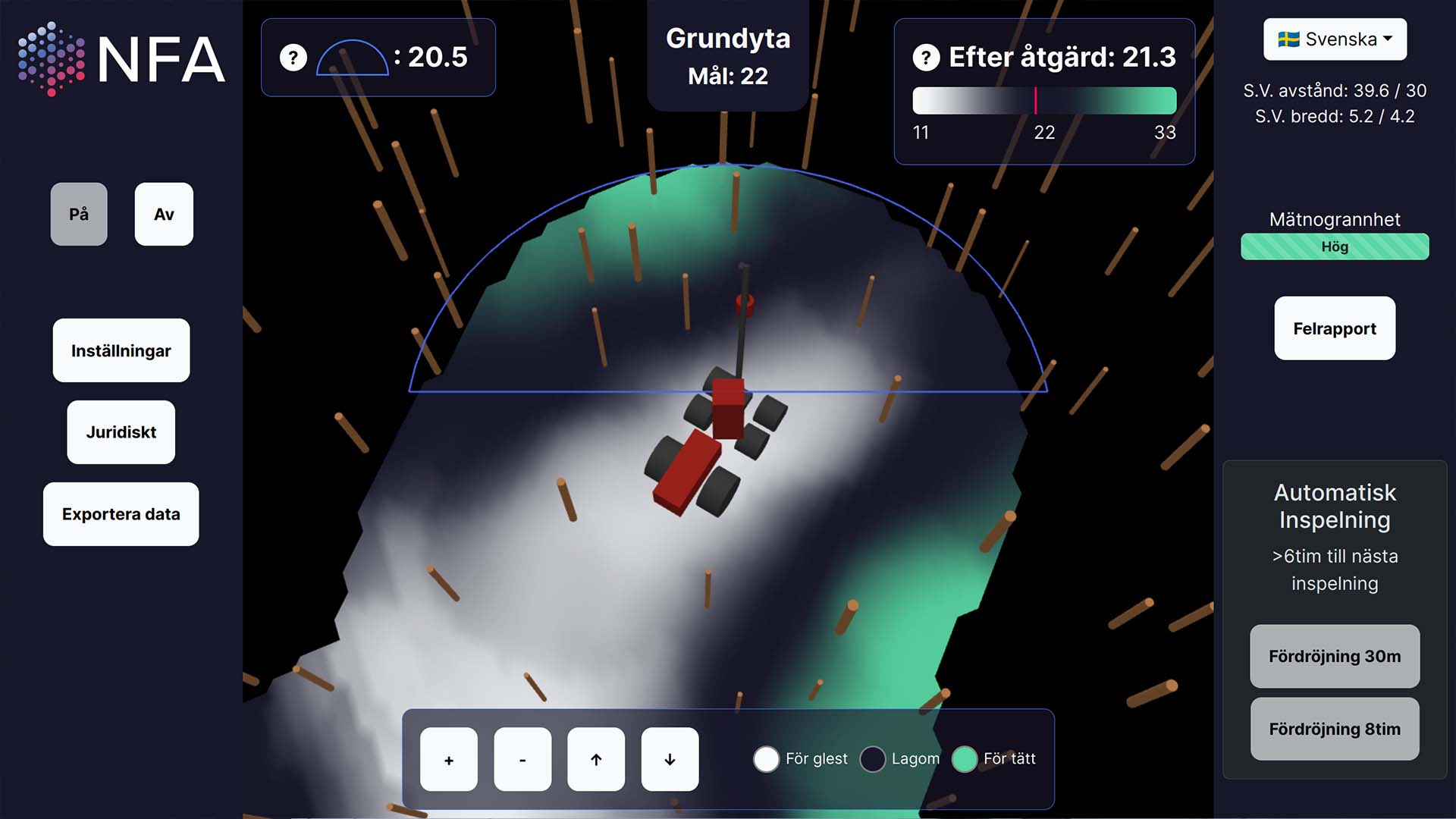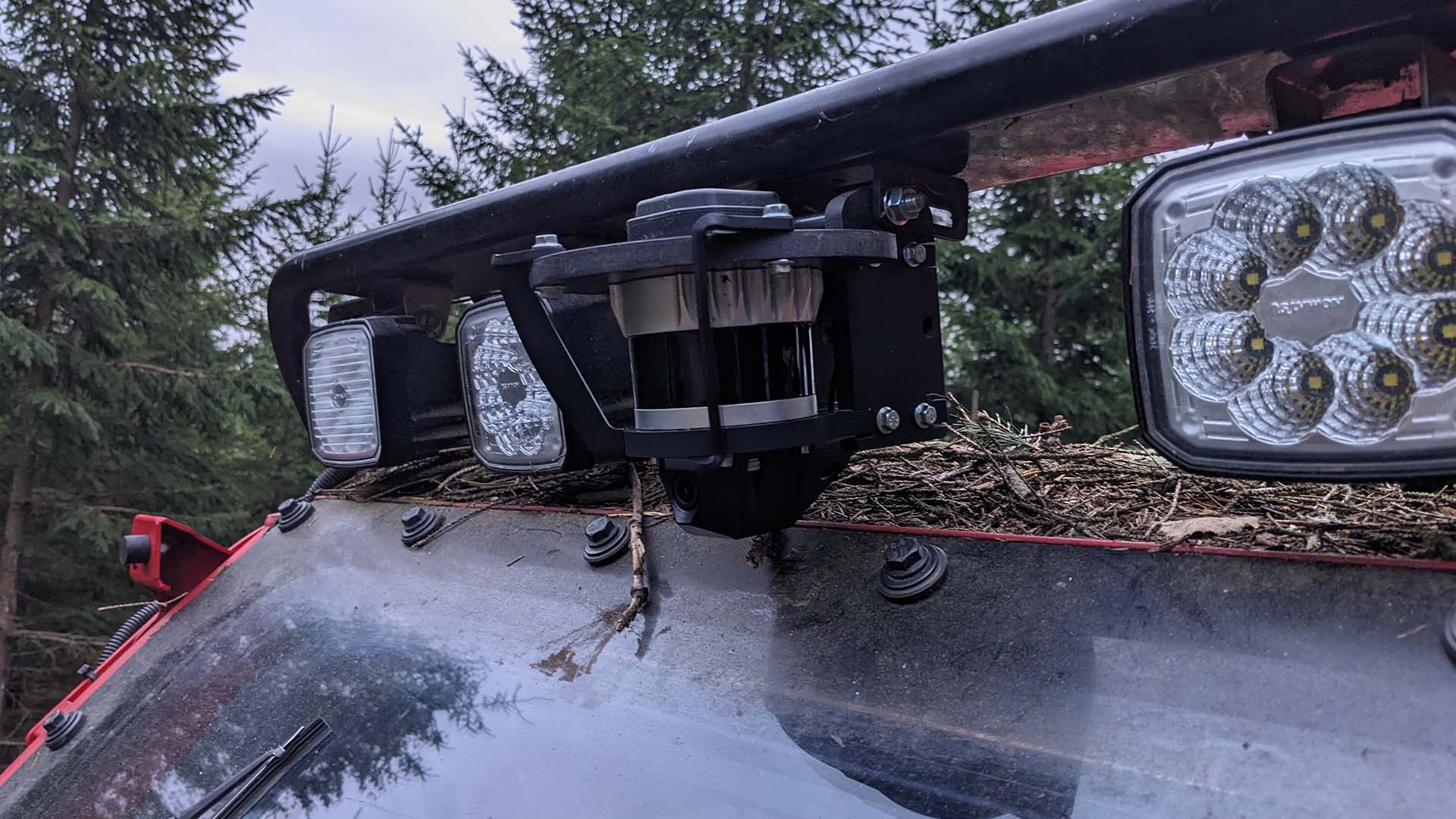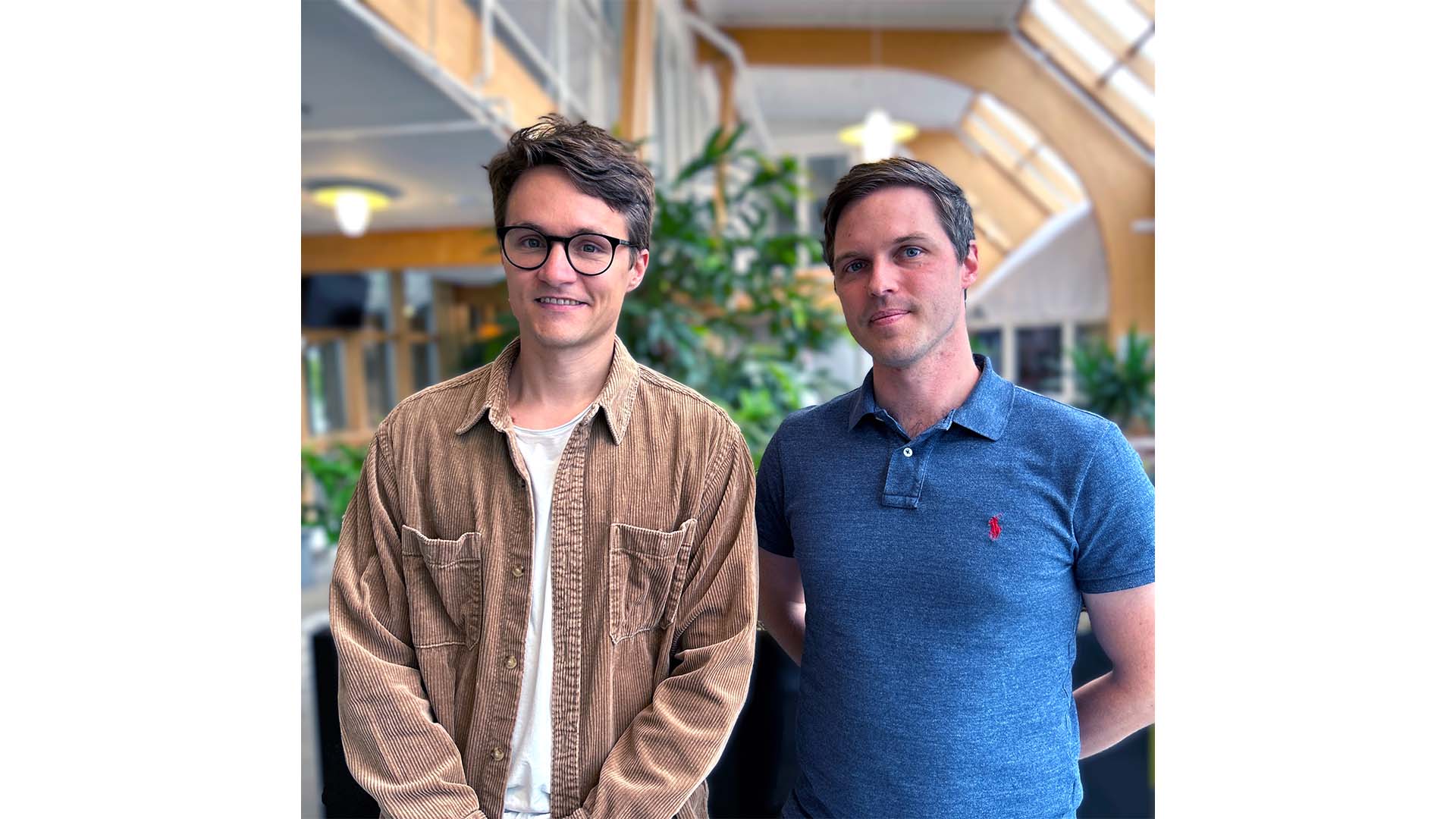Official launch at Elmia Wood: Sensor-based driver support for forestry machines

The answer can be found at Nordic Forestry Automation at Innovation Square at Elmia Wood.
- ‘My first test was actually to mount some sensors on a quad bike and take it for a spin in the forest at home,’ says Lars.
And on the winding track it is:
- We now have a sensor-based driver support system for harvesting machines that was developed together with several Swedish and foreign forestry companies and is now being shown to a wider public for the first time at Elmia Wood, he says.
The system is independent of the harvester's other systems and consists of three parts: a sensor module placed in the headlight ramp, a computer in the cab that uses newly developed algorithms and AI to convert the data from the sensors into a digital version of the environment around the machine, and a screen that provides operator support to the driver.
- Suddenly, we have a machine with the ability to perceive its surroundings, which has a real-time picture of what the forest around the machine looks like and can compare it against a target in the thinning, expressed as a stem count or desired basal area. In short, the system helps the operator to achieve the correct density according to the thinning template or felling directive.

Testing that adds further interest
Until now, the harvester computer in the machines has provided information on the trees being harvested. With the addition of NFA's system, we now also get data on the forest that remains.
- In thinning, it is actually more important what is left standing than what is harvested.
This type of technology has revolutionised the automotive industry and there are also examples of applications in mining and agriculture, for example. But very little has happened in forestry.
- We had to change that. Harvester drivers today have a very complex task with many decisions being made all the time. The system provides support in some of the decisions that the driver makes. A better working environment will make it easier to do a good job in thinning and, in the long run, also easier to recruit and start working as a new harvester driver," says Lars.

In Sweden, NFA works closely with Södra and Sveaskog, which are also co-owners of the company. The system is currently installed on six thinning harvesters in operation in Sweden, and in total the system has been used for just over 5,000 operating hours.
- ‘The best proof that it works is that Södra wants it for all harvesters that carry out thinning, somewhere between 100 and 150 harvesters,’ says Lars, who is looking forward to showing the system at the fair:
- "This is AI technology that is not 10 or 20 years away, but is already useful in Swedish thinning forests.